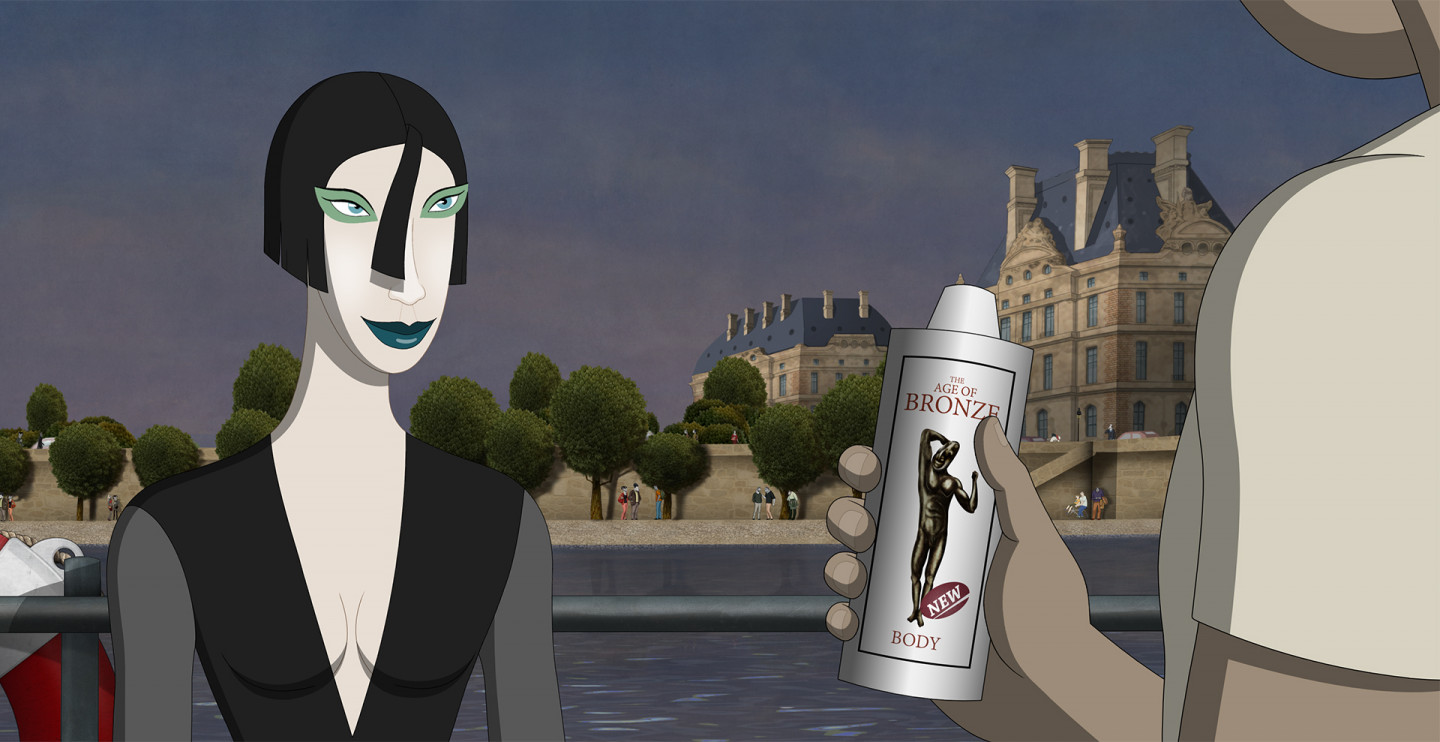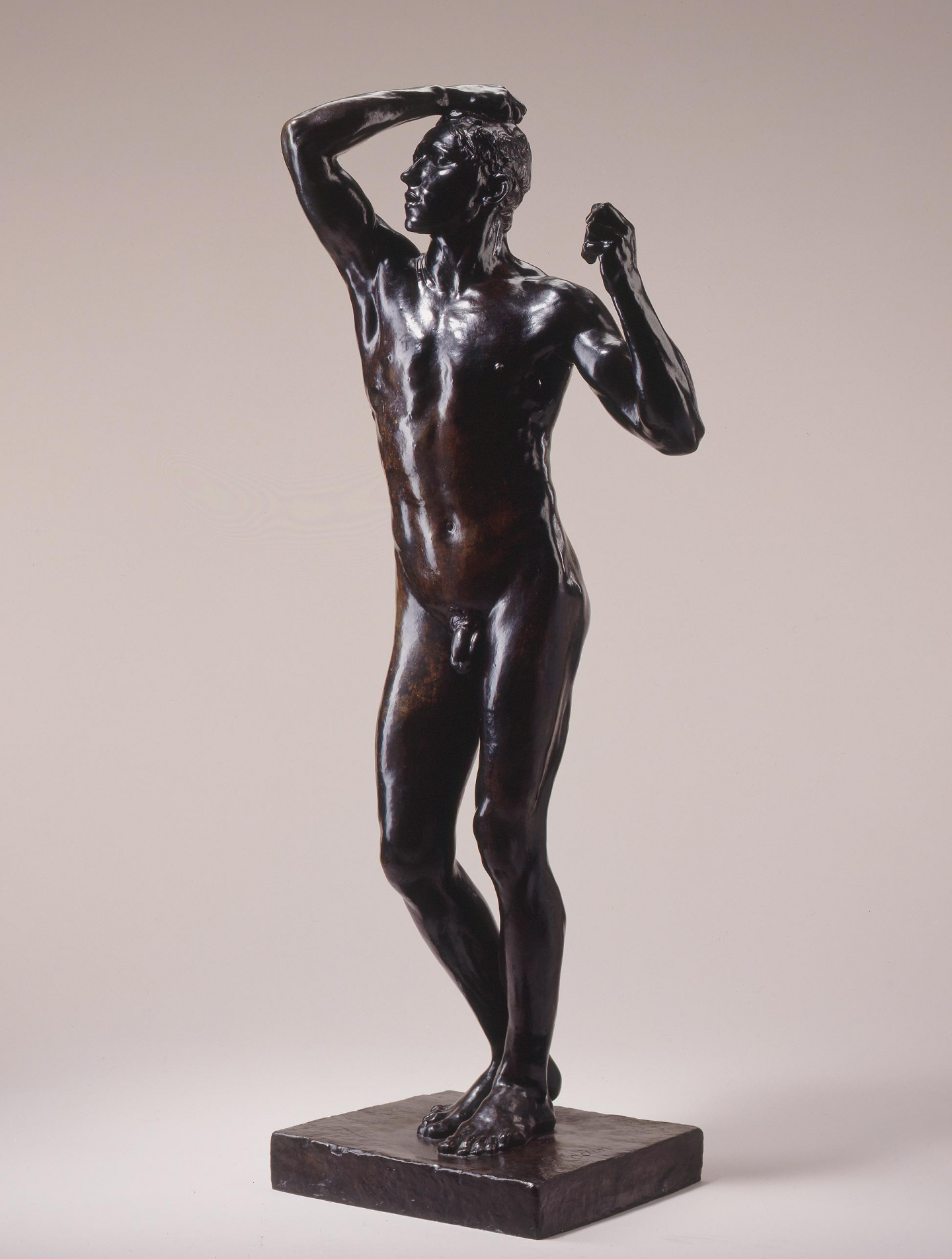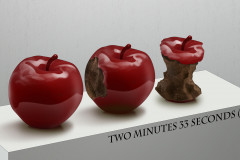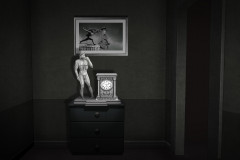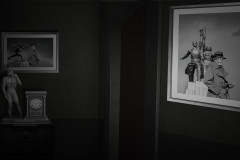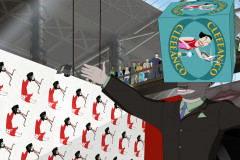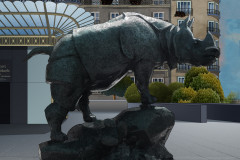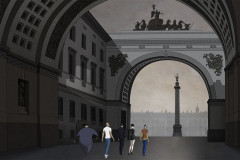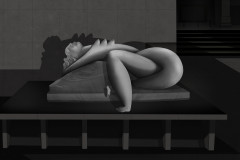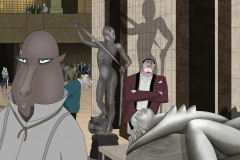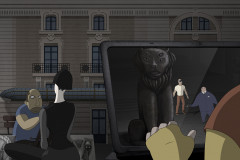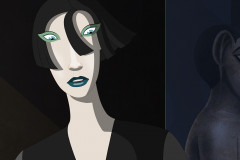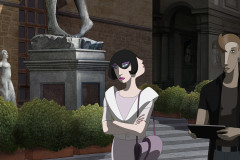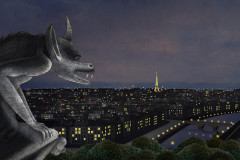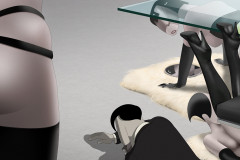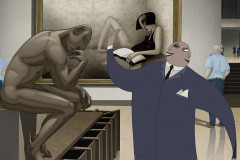Rodin, Auguste (1840-1917): Érckorszak (Bronzkor), 1875/76 (bronz, 182,9 cm magas) Musée Rodin, Párizs. A fiatal férfiaktot ábrázoló szobor a századforduló legnagyobb francia szobrászának, Rodinnek első igazán jelentős és nagy figyelmet kiváltó alkotása. Az „ébredő emberiség” régészeti korszakára utaló cím a filmben egészen konkrét jelentést kap: az alkotást Bye-Bye Joe bronzosító spray-jén láthatjuk viszont, amikor hősünk Rodin másik híres szobrának, a Gondolkodónak „bőrébe” készül belebújni.
Bye-Bye Joe „élethű” bronzszobor kíván lenni a spray használatával, s a magyarul „Érckorszakként” ismert alkotás feltűnése a flakonon a siker záloga is lehet. Hiszen, amikor a szobrot 1877-ben a párizsi Szalonban bemutatták, pont annak élethűsége, az ifjú atletikus férfitest tökéletes anatómiai ábrázolása keltett figyelmet, s indította el azokat a híreszteléseket, melyek szerint az alkotás élő testről közvetlenül vett gipszöntvény alapján készült volna. A szobrász felháborodottan utasította vissza a vádakat és bizonyította igazát, hiszen csaknem 18 hónapon keresztül dolgozott rengeteg tanulmányt készítve modelljéről, egy belga katonáról, hogy ne csak a fizikai test pontos ábrázolása sikerüljön, hanem az abban ébredező életenergia is kifejezésre jusson. Rodin számára fontos volt e szimbolikus tartalom, ezt hangsúlyozandó „Az emberiség ébredése” címen is gondolkozott, de aztán mégis az értelmezéseket jobban nyitva hagyó „Érckorszak” mellett döntött. Mint ahogy az alak megformálása, mindenfajta korra, szerepre, konkrét jelentésre utaló attribútum hiánya is tág teret enged az asszociációknak – sokan e többértelműség miatt is tartják az alkotást az első modern szobornak. Közben persze ezer szállal kötődik nagy művészettörténeti előképeihez: idézi a klasszikus görög atléta- és istenszobrok tökéletes arányú, kontraposztban álló (testsúlyukat egyik lábukra helyező) alakjait, csak éppen izgalmasabb, vibráló felületalakítással, egyedibb mozdulattal és idézi Michelangelót is, akinek életerőtől duzzadó, különleges testhelyzetű szobrai (pl. a Louvre-ban található Rabszolga-szobrok) nagy hatással voltak Rodinre.
Az alkotásról számos bronzöntvény készült, melyek közül egy a budapesti Szépművészeti Múzeum 19. századi gyűjteményében is megtalálható.
Rodin, Auguste (1840–1917): The Age of Bronze, 1875/76 (bronze, 182.9 cm tall), Musée Rodin, Paris. This sculpture of a young male nude was the first major work by Rodin, the most prominent French sculptor of the fin-de-siècle. Its title—referring to an archaeological period of “awakening humanity”—takes on a very literal meaning in Ruben Brandt, Collector, where the artwork appears on Bye Bye Joe’s bronzing spray can, as he prepares to pose as Rodin’s other famous sculpture, The Thinker.
Bye Bye Joe intends to pass as a “lifelike” bronze statue using the spray, and the appearance of The Age of Bronze on the label signals the promise of success. When the sculpture debuted at the Paris Salon in 1877, it drew attention precisely because of its realism—the flawless anatomical depiction of a youthful, athletic male body sparked rumors that it had been cast directly from a live model. Outraged, Rodin refuted the accusations and proved his case: he had worked on the piece for nearly 18 months, creating numerous studies of his model, a Belgian soldier, in order to capture not just physical accuracy but the sense of life stirring within the body.
Rodin placed great importance on this symbolic content; he even considered naming the piece The Awakening of Humanity, before settling on the more open-ended title The Age of Bronze. Like the lack of any clear historical or narrative reference in the sculpture itself, the title leaves room for interpretation—this ambiguity is one reason why the work is often considered the first modern sculpture. At the same time, it draws deeply from art historical precedents: it echoes the contrapposto stance and ideal proportions of classical Greek athletes and gods, yet with more dynamic surface texture and a distinctive gesture. It also reflects the influence of Michelangelo, whose powerful, contorted figures—such as the Slaves in the Louvre—left a lasting impression on Rodin.
Numerous bronze casts of the sculpture exist, including one in the 19th-century collection of the Museum of Fine Arts in Budapest.






